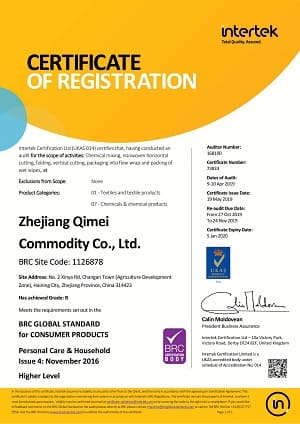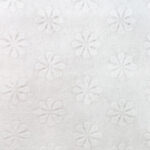Spunlace onwoven Fabric Type: Polyester,Poly -Viscose Blend material, Bamboo Fiber, Wood Pulp(Flushable), Cotton or Soy Fiber(Biodegradable)
Flat or Textured( Your Own LOGO is available)
Grammage: 30-80gsm
1/10/30/80/100/120/160 pcs/pack
Single-use scent wipes are typically smaller in size, ranging from a few square inches to a few square feet, while larger, multi-use wipes can be several feet in length and width.
1. Plastic resealable bag: This is the most common type of wet wipe packaging. It is made of plastic and has a resealable strip on top to keep the wipes fresh and moist.
2. Flip-top lid container: This type of packaging consists of a plastic container with a flip-top lid that can be opened and closed to access the wipes.
3. Soft pack with plastic flip-top lid: Similar to the flip-top lid container, this packaging comes in a soft pack and has a plastic flip-top lid for easy access.
4. Pop-up dispenser: This type of packaging features a pop-up dispensing mechanism that pulls out one wipe at a time.
5. Travel pack: A small packaging designed for on-the-go use, it often comes with a plastic snap closure.
6. Single-use packaging: These wet wipes come in small, sealed packets which are convenient for travel or outdoor activities.
7. Refill bag: This larger size packaging is designed to refill other wet wipe containers, and usually has a resealable opening.
Non-woven fabric: This is the material used to make the wipe itself. Non-woven fabrics are typically made from synthetic fibers like polyester or polypropylene, or natural fibers like cotton or bamboo.
Water: Water is used to moisten the wipes and provide a medium for the other ingredients.
Fragrances: Scent wipes are infused with fragrances or scents to provide a fresh or clean smell. These fragrances can be synthetic or derived from natural sources.
Preservatives: Preservatives are added to scent wipes to prevent the growth of bacteria and mold. Common preservatives used in wipes include methylparaben and propylparaben.
Surfactants: Surfactants are used to help clean surfaces by breaking down dirt and grime. They also help to distribute the fragrance evenly throughout the wipe. Common surfactants used in scent wipes include sodium laureth sulfate and cocamidopropyl betaine.
Emulsifiers: Emulsifiers are used to help mix ingredients that do not naturally mix together, such as oil and water. They help to ensure that the fragrance and surfactants are evenly distributed throughout the wipe.
pH adjusters: pH adjusters are used to ensure that the wipe has the appropriate pH level for the intended use. For example, wipes designed for use on skin may have a lower pH to avoid irritation, while wipes designed for use on hard surfaces may have a higher pH to improve cleaning efficacy. Common pH adjusters used in scent wipes include citric acid and sodium hydroxide.
Good Manufacturing Practice (GMP): GMP is a set of guidelines that ensure that products are manufactured consistently and meet quality standards. Compliance with GMP is often required by regulatory agencies in many countries.
Environmental Protection Agency (EPA) regulations: In the United States, scent wipes that are marketed as disinfectants are subject to EPA regulations. These regulations require manufacturers to register their products with the EPA and ensure that they meet specific efficacy and safety standards.
European Union regulations: In the European Union, scent wipes are subject to the Biocidal Products Regulation (BPR), which requires manufacturers to register their products and demonstrate their safety and efficacy.
International Organization for Standardization (ISO) certifications: ISO certifications, such as ISO 9001 and ISO 13485, are internationally recognized standards that demonstrate a manufacturer's commitment to quality management and product safety.
Safety Data Sheets (SDS): Manufacturers are required to provide Safety Data Sheets for their products. These documents contain information on the ingredients, potential hazards, and safe handling procedures for the product.












